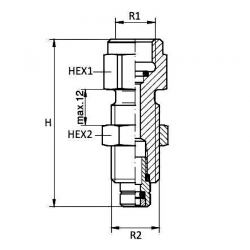





|
MPRTT12BSP
|
|
|
PRISE PRESSION
|
16 X 200
|
|
PRESSION (bar)
|
620
|
|
RACCORD FEMELLE
|
1/2 BSP
|
|
MARQUE
|
TRALE - DICSA
|
Fiche technique
Références spécifiques
Télécharger

Le client n'a pas laissé de commentaire.

check_circle
check_circle


